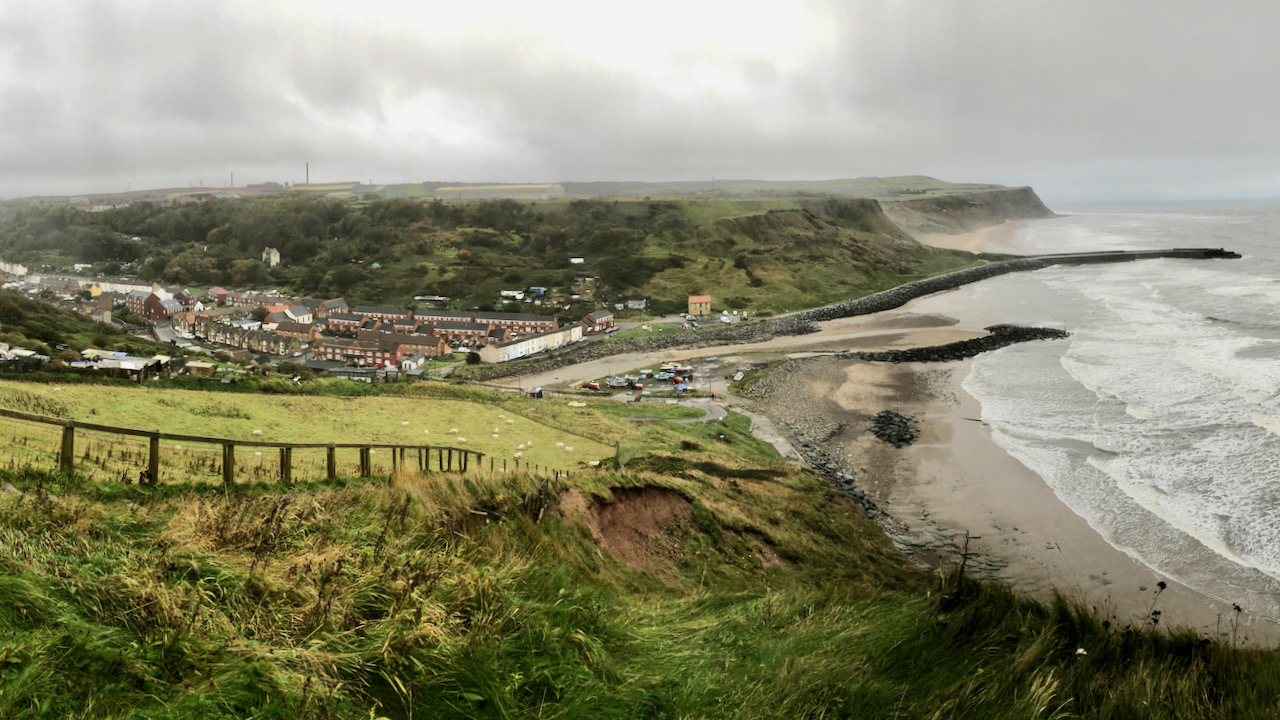Have you ever pondered the origins of Skinningrove, nestled in this sheltered valley leading to the North Sea? What led to its establishment there? I certainly have.
Back in 1873, when the Loftus Iron Company first erected two blast furnaces on that hill overlooking the valley, the iron-smelting industry was already thriving in the Cleveland area. It was a matter of convenience; those ironmasters realised that they could mine the iron ore nearby and not have to fuss about transporting it by rail. But the company went into liquidation and re-emerged as the Skinningrove Iron Company. This company had the notion that the pig-iron they produced could be shipped directly to their customers in Scotland or the Continent — provided they could build a suitable jetty.
And so they did just that, constructing the jetty with an innovative twist – they used hydraulic cement made from slag from their own blast-furnaces. This opened in 1890, and soon enough, shipments of pig-iron and steel began to sail directly from the jetty. They loaded it onto specialised steamers by hoisting the metal directly into the hold in securely bundled chains, thus eliminating stowing costs. Another rather clever innovation.
Not long after the jetty was established, the operation expanded to include five blast furnaces, with four of them working continuously. For many years, nearly 150,000 tons of pig-iron made its way to Scotland. But come the dawn of the 20th century, a shift occurred in the Scottish pig-iron market. Those malleable iron works started to make way for steel mills, and the hefty pipe trade gravitated south to the Midlands.
To keep up with these changing tides, the Skinningrove Iron Company made a wise decision to set up their very own steel works, which by 1911 was up and running. Post World War II, they even added a new blast furnace and a 300-ton open hearth steelmaking plant.
By the time the Skinningrove Iron Co. got nationalised into the Iron and Steel Corporation of Great Britain in 1951, Skinningrove had evolved into a bustling and lively community.
Sources
- ‘The Romance of Skinningrove’ (1937) Times, 15 Dec, 9, available: https://link-gale-com.ezproxy.is.ed.ac.uk/apps/doc/CS151204239/GDCS?u=ed_itw&sid=bookmark-GDCS&xid=11689f15[accessed 18 Jul 2021].
- ‘Skinningrove Steelworks’ Wikipedia. https://en.wikipedia.org/w/index.php?title=Skinningrove_Steelworks&oldid=991032602[accessed 25 Nov 2023].

Leave a Reply